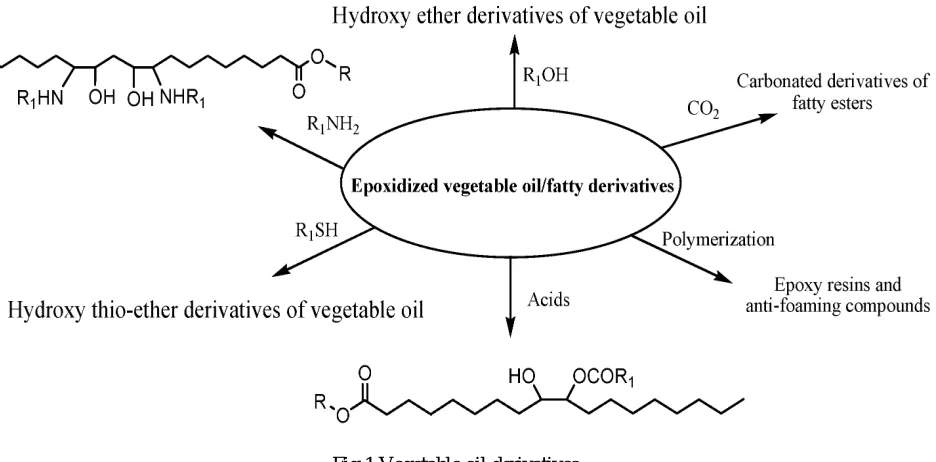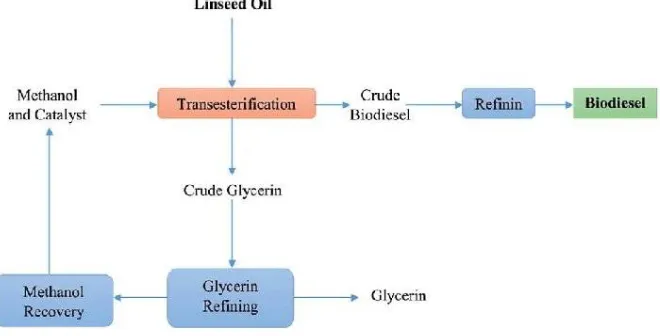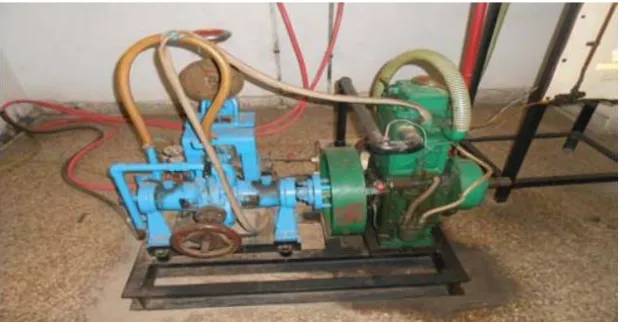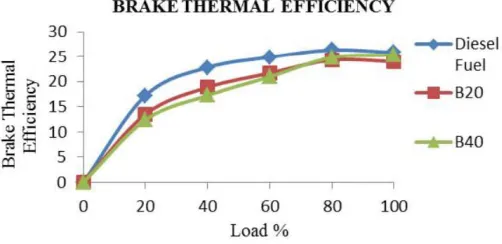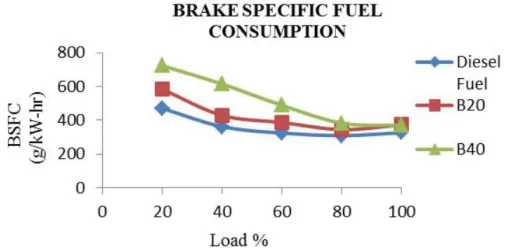Performance and Emission Characteristics of
a Diesel Engine Fuelled with Biodiesel
Extracted from Linseed Oil
Venkatesan V
Department of Mechanical Engineering, FEAT, Annamalai University, Chidambaram, Tamil Nadu, India
ABSTRACT: Biodiesel obtained from various renewable sources has been recognized as one of the alternative fuel due to its biodegradability, high cetane number, no sulphur emissions and low volatility. Biodiesel derived from non-edible feed stocks such as linseed oil are reported to be feasible choices for developing countries including India where consumption and cost of edible oil is very high. The aim of present work is to optimize the biodiesel production from linseed oil through trans esterification process. The various performance and emission parameters like brake power (BP), brake specific fuel consumption(BSFC), Brake thermal efficiency (BTE), CO emissions, CO2 emissions, HC emissions, NOx emissions and smoke were evaluated at different loads in a 4 stroke, single cylinder Diesel engine. These performance and emission parameters of diesel fuel were compared with that of B25, B50, B75 and B100.
KEYWORDS:linseed oil, biodiesel, Transesterification process.
I.INTRODUCTION
Fossil fuel is widely used in the world so the resources are decreased in coming future. Due to depletion of fossil fuels and environmental aspect has made engineers and scientists to develop clean, renewable and sustainable energy systems. At present resources of petroleum are decreases day by day. Diesel engines are used in transportation, electric power generation, farming, construction and in many industrial activities. These wide fields of the usage lead to increasing requirement of petroleum derived from fuels. Because of rising oil prices and harms of petroleum based fuels to the environment, researches have focused on more environmentally fuels and new energy sources. So an alternative fuel for diesel engines have become important due to the gradual depletion of world petroleum reserves and the impact of environmental pollution due to increasing exhausts emissions. In our country the sources of vegetable oils in rural areas are widely and it is produced in a cyclic order. It is renewable and heat release rate is similar to diesel and also its emissions rate is relatively low. A number of researchers have investigated the effect of using vegetable oil in diesel engines for long periods of time. Vegetable oils gives higher values of viscosity than diesel fuel at the same temperature with effect of poor atomization in the injections [3]. Therefore, it cannot be used directly as an alternative fuel for diesel engines. So the method of reduced high viscosity of vegetable oils has been approached in several ways, such as transesterification, blending with other fuels, preheating the oils.
rapeseed are the raw materials used in Europe whereas soyabean is used in USA. Thailand uses palm oil, Ireland uses frying oil and animal fats. In India vast research has been done on biodiesel from jatropha oil. It is proposed to use nonedible oil for making biodiesel, as consumption from edible oil is very high in India.
II.LINSEED OIL AS A POTENTIAL FUEL FOR DIESEL ENGINE
Identification of alternative fuels for use in IC engines has been subjected to studies throughout the globe. Performance tests have shown suitability of variety of alternative fuels such as hydrogen, alcohols, biogas, producer gas and various types of edible and non-edible oils. However, in Indian context, the bio-origin fuels like alcohols, vegetable oils, and biogas can contribute significantly towards the problems related to fuel crises. Petroleum based diesel fuels have different chemical structure than vegetable oil. The former contain only carbon and hydrogen atoms which are arranged in normal (straight chain) or branched chain structures as well as aromatic configurations. The normal structure is preferred for better ignition quality.
Diesel fuel can contain both saturated and straight or unbranched chain unsaturated hydrocarbons, but the later are not present in large amounts to make oxidation a problem. Vegetable oils consist of triglycerides to about 97%; the other 3% distribute among di and mono glycerides and furthermore 3 fatty acids and the fat accompanying which are mostly removed with refining. Structurally, a triglyceride is a reaction product of one molecule of glycerol with three fatty acid molecules to yield three molecules of water and one molecule of triglyceride.
Fig 1 Vegetable oil derivatives
III.EXPERIMENTAL SETUP
A Kirloska AV1 make, single cylinder, constant speed, air cooled, direct injection, CAF 8 model diesel engine was selected for the present research work, which is primarily used for agricultural activities and household electricity generations. It is a single cylinder, naturally aspirated, four stroke, vertical, air-cooled engine. It has a provision of loading electrically since it is coupled with single phase alternator through flexible coupling. The engine can be hand started using decompression lever and is provided with centrifugal speed governor. The lubrication system used in this engine is of wet sump type, and oil is delivered to the crankshaft and the big end by means of a pump mounted on the front cover of the engine and driven from the crankshaft.
The inlet and exhaust valves are operated by an overhead camshaft driven from the crankshaft through two pairs of bevel gears. The fuel pump is driven from the end of camshaft. A voltmeter, ammeter and wattmeter were connected between alternator and load bank. The thermocouples were mounted in the exhaust manifold to measure the exhaust temperature. The AVL 437 smoke meter and AVL Di-Gas Analyzer were also kept in proximity for the measurements of various exhaust gas parameters. The engine was started at no load by pressing the exhaust valve with decompression lever and it was released suddenly when the engine was hand cranked at sufficient speed. Then feed control was adjusted so that engine attains rated speed and was allowed to run about half hour till the steady state condition was reached. With the fuel measuring unit and stop watch, the time elapsed for the consumption of 20cc of
fuel was measured. Fuel consumption, RPM, exhaust temperature, smoke density, CO, NOx, HC, CO2 and power
output were also measured. The engine was loaded gradually keeping the speed with in the permissible range and the observations of different parameters were evaluated. Short term performance tests were carried out on the engine with diesel to generate the base line data and subsequently Linseed Oil and Diesel was used to evaluate its suitability as a fuel. The performance and emission characteristics of Linseed Oil was evaluated and compared with diesel fuel.
Fig 2 Experimental Process
IV.TEST ENGINE SPECIFICATION
The experiments were performed on test diesel engine with varying loads ranging from 0% to 100% of full load. Actual load values varying from 0 to 20 kg were applied on the engine with dynamometer. The engine and biodiesel fuel pictures are shown in fig. 2 and fig.3.
Fig 3 Experimental setup Kirloskar AV1
V. RESULT AND DISCUSSION
1. Brake Power
On the analysis of the brake power of engine in figure 4, it is found that the diesel fuel shows maximum brake power as compare to biodiesel blended fuels. It is also seen that as the load was increasing the brake power is also increasing for all the fuels. B20 fuel shows a higher value of brake power as compared to the B40 fuel. As the concentration of the biodiesel fuel in blends increases, the brake power decreases. It is so because at low concentration of the biodiesel fuel, high combustion of fuel takes place and high brake power produced in the engine. However, it is seen that the B20 fuel shows close results of brake power with diesel fuel.
Fig. 5Analysis of the Brake Power with different fuels
2. Brake Thermal Efficiency
For the analysis of the performance characteristics of the engine, brake thermal efficiency is a main important parameter. In the analysis of the brake thermal efficiency in figure 5, it is seen that the diesel fuel has high efficiency as compare to the biodiesel blended fuels. As the load was increasing, the efficiency of the diesel fuel is also increasing. It is also seen that the B20 fuel shows high efficiency up to 60% of the load as compared to the B40 fuel. However, at high load conditions, B40 blended fuel shows little bit higher increase in the efficiency value as compared to the B20 fuel. It is also observed that at full load condition, all the fuel i.e. diesel, B20 and B40 were having approximately similar values of efficiencies. At high load conditions, better combustion of fuel takes place and efficiency is increasing. This is on account of the diminishing Calorific Value of the Blends due to increase in the quantity of linseed oil.
3. Brake Specific Fuel Consumption
Brake specific fuel consumption basically shows the amount of fuel used in the experiment to run the engine. In the analysis of the brake specific fuel consumption of the engine, three different fuels were used in the engine. The fuels were used as g/hr basis in the engine. The analysis of brake specific fuel consumption in figure 6 shows that B40 fuel shows higher value of specific fuel consumption as compared to B20 and diesel fuel. It is also observed that the initial value of the specific fuel consumption of all the three fuels was having highest values. However, as the load increases, the specific fuel consumption decreases. This is because, as the loads on engine increases, fuel consumption also increases, but the Brake power output outweighs the fuel consumption increase.
Fig 7 Analysis of the Brake Specific fuel consumption with different fuels
VI.CONCLUSION
The results of the experiment showed that the performance of the engine on Linseed oil was slightly inferior to that on diesel fuel. The thermal efficiency of the engine was lower and the brake specific energy consumption of the engine was higher when the engine was fueled with Linseed oil compared to diesel fuel. The oxides of nitrogen from during the whole range of experiment were lower than diesel fuel. The Carbon monoxide, unburned hydrocarbon from the fuel was found higher than diesel fuel during the whole experimental range. The results from the experiments suggest that linseed oil is potentially good substitute fuel for diesel engine and performance and emissions characteristics were found to be comparable to diesel fuel.
REFERENCES
[1] Y. He et al used cottonseed oil as a partial substitute for diesel oil in fuel for single-cylinder diesel engine. (2005) 805–813.
[2] S. Bari et al investigated the preheating of crude palm oil (CPO) on injection system, performance and emission of a diesel engine. (2002) 339–351.
[3] Murat Cetin et al have use of hazelnut oil as a fuel in pre-chamber diesel engine (2007) 63–67.
[4] K. Pramanik has investigation on the use of Jatropha curcas oil and diesel fuel blends in compression ignition investing engine. (2003) 239– 248.
[5] Sehmus Altun has used Sesame oil on direct injection diesel engine. (2008)1791-179
[6] G Lakshmi Narayana Rao, S Sampath and K Rajagopal, “Experimental studies on the combustion and emission characteristics of a diesel engine fuelled with used cooking oil methyl ester and its diesel blends”; World Academy of Science, Engineering and Technology, 2008; 37, pp 1-7.
[7] Gerhard Knothe, Jon Van Gerpen, Jürgen Krahl “The Biodiesel Handbook” AOCS Press Champaign, Illinois, 2005.
[8] B. Anjan Kumar Prusty, Rachna Chandra and P. A. Azeez, “Biodiesel: Freedom from dependence on fossil fuels”, Nature Precedings, 2008; pp. 1-27.
[9] M.K.Ghosal, D.K.Das, S.C.Pradhan and N.Sahoo; “Performance Study of Diesel Engine by using Mahua Methyl Ester (biodiesel) and its Blends with Diesel Fuel”; Agricultural Engineering International: the CIGR Ejournal. Manuscript EE 08 014. Vol. X. October, 2008. [10] Kazi Mostafijur Rahman, Mohammad Mashud, Md. Roknuzzaman and Asadullah Al Galib; “Biodiesel from Jatropha Oil as an Alternative
[11] Sachindra Dhakad, Upendra Parashar, Devendra singh Dandotiya, Vivek Dhakad, Jogendra singh Gurjar; “Practical Performance of Internal Combustion Engine Using Jatropha Oil as A Bio-Fuel”; International Journal of Emerging Technology and Advanced Engineering; Volume 3, Issue 10, October 2013.
[12] Ashish Jawalkar, Kalyan Mahantesh, M Jagadish, Madhusudhan Merawade, M C Navindgi; “Performance and Emission Characteristics of Mahua and Linseed Biodiesel Operated at Varying Injection Pressures on CI Engine”; International Journal of Modern Engineering Research (IJMER) Vol.2, Issue.3, May-June 2012 pp-1142-1149.
[13] Dr. Hiregoudar Yerrennagoudaru, Manjunatha K, Chandragowda M, Basavaprakash B.; “Performance & emission of C I Engine Using Diesel & Ethanol blended with linseed oil”; International Journal of Engineering Science and Innovative Technology (IJESIT) Volume 3, Issue 4, July 2014, Pg. No. 735-742.
[14] Heywood, J. B. (1988). Internal Combustion Engine Fundamentals”, McGraw-Hill.
[15] Warnatz, J, Maas, U, & Dibble, R. W. (2001). Combustion: Physical and Chemical Fundamentals, Modeling and Simulation, Experiments, Pollutant Formation”, 3rd Edition, Springer, New York.
BIOGRAPHY
